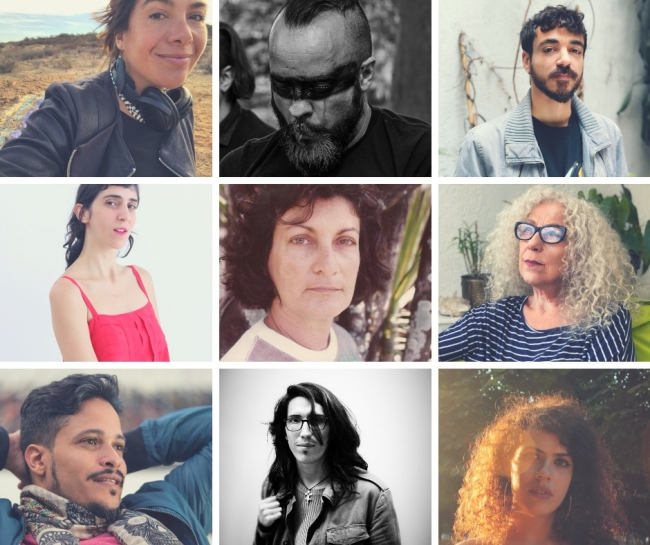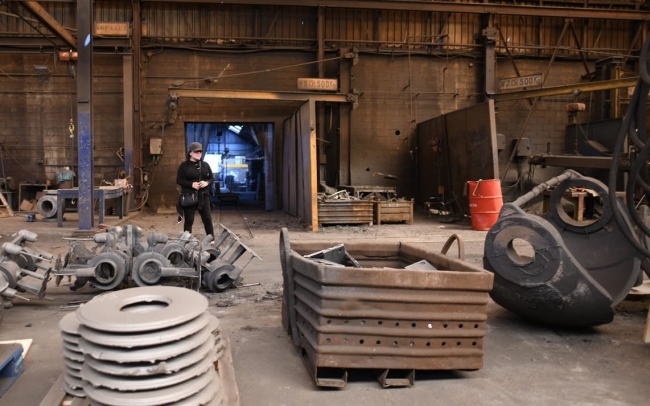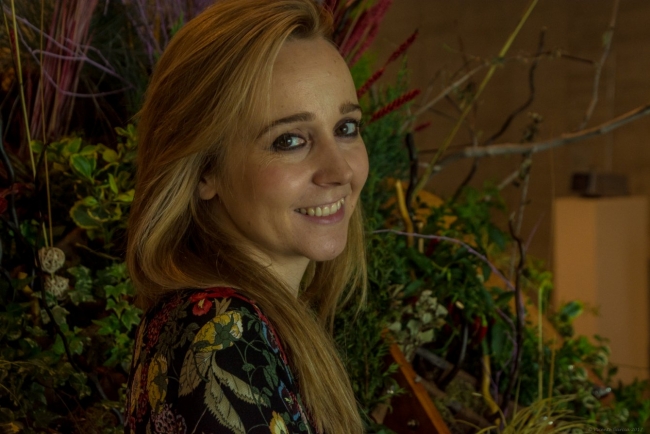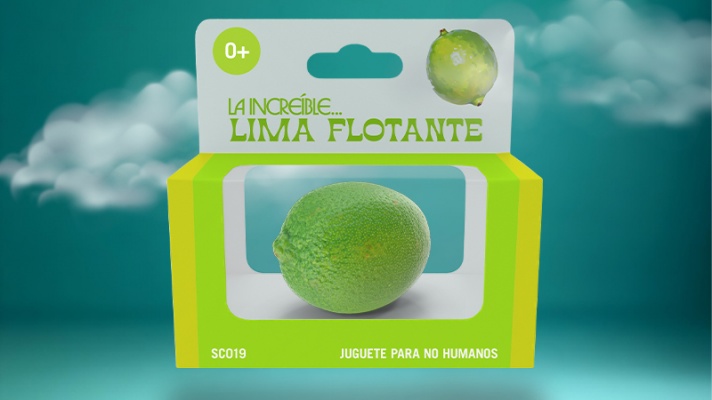Galerías y otras organizaciones que le representan
Organizaciones con obra
Profesionales con obra
Descripción del Artista
El trabajo de Tania Candiani se centra en producir imágenes, objetos, intervenciones o piezas participativas que hablen sobre la percepción de los espacios urbanos, la cultura popular contemporánea, los patrones estéticos y los rituales de distinta índole.
Más allá de una observación específica sobre la forma, su enfoque explora el estado emocional de las personas o grupos sociales y su contexto, a la vez que propone una investigación sobre materiales y técnicas.
Los procesos, como estrategia empírica, pero también como investigación rigurosa, son parte esencial de su búsqueda y sus resultados.
En estos momentos, desarrolla un proyecto cuyo eje conceptual se articula a partir de acciones poéticas en torno a las máquinas, el lenguaje, la escritura y la codificación; así como una investigación sobre el concepto de vivienda, de modernización, y la arqueología del espacio doméstico.
La obra de Tania Candiani es parte de colecciones privadas y públicas.
Su trabajo ha sido exhibido de forma individual y colectiva en museos de Estados Unidos, Europa y México.
Tania Candiani recibió la Beca Guggenheim en la categoría Creative Arts, para desarrollar un proyecto relacionado con la arquitectura doméstica.
Bio (english)
With extensive experience in Mexico and internationally, Candiani is interested in the complex intersection between language systems, sound, and logics of technology. There is some nostalgia for the obsolete in her work, which seeks to make explicit both the discursive content of artifacts, and projections for the future envisioned in the past. Her translation processes between sound, words, patterns, and machines create discursive associations and reveal logics of thinking.
Some of her early works took advantage of the language of embroidery to challenge stereotypical images of gender (Gordas, 2002), subverting notions of power within the private and public spheres (Kaunas Graffiti, 2009), or to rekindle what seemed to be lifeless or submissive (La Constancia dormida, 2006). Likewise, her work with embroidery proposes a new insight into the architectural representation of space (From Floor Plans to Confection Patterns: Apartment Houses in New York City, 1900–1914, 2010). As such, her work established a relationship with architecture that would have consequences later in her career.
The use of embroidery as a language also intersects with the production of narratives (Tales and Other Nightmares,2009); the thread materializes the existence and the power of the line as containment of meaning, generating shapes and functioning as symbols transformed into text, allowing a multiplicity of meanings to occur between the image and the word. Written language from its minimum particles to literary narrative, as well as its oral tradition (Refranes, 2008; Otros paseos. Otras historias, 2010), has been the starting point for many projects during her career.
Candiani started exploring the possibilities of technology enabling her to continue her research on time (Plataforma Sonora,2012), embroidery, sound (Sobre el Tiempo, 2008), and narrative (Leer de corrido, 2010).
In recent years, she has collaborated with interdisciplinary working groups (Five variations on phonic circumstances and a pause, 2012). Her projects are focused on promoting links between the history of science, empirical observation techniques, and technological utopias (Serendipia, 2013 and Atlas, 2015), based on the reinterpretation and recreation of forgotten ideas in order to rethink the moment of invention (Máquina para volar, Besnier 1673, 2015), as well as obsolete artefacts and the restoration of professions to understand the organization of thought as inventive discourse.
Her solo projects include: Five variations on phonic circumstances and a pause, Laboratorio Arte Alameda, Mexico City (2012) and Kiblix IT Linux Festival, Máribor, Slovenia (2014); Serendipia, Artium, Centro Museo Vasco de Arte Contemporáneo, Vitoria-Gasteiz, Spain (2013); La Magdalena y otros estudios de campo, Casa del Lago, Mexico City (2013) and Museo de la Ciudad, Querétaro, México (2014); Tania Candiani: From Floor Plans to Confection Patterns: Apartment Houses in New York City, 1900–1914, Abrons Arts Center, New York, USA (2010).
Her work has also been included in several group exhibitions such as: La gravedad de los asuntos, Laboratorio Arte Alameda, Mexico City (2015) and Polytechnic Museum, Moscow, Russia (2015); Sights and Sounds: Global Film and Video, The Jewish Museum, New York, USA (2015); The Future of Fashion is Now, Museum Boijmans Van Beuningen, Rotterdam, Netherlands (2014); Prix Ars Electronica, CyberArts Exhibition, OÖ Kulturquartier, Linz, Austria (2013); XI Bienal de Cuenca, Museo de Arte Moderno, Ecuador (2011); Vivienda social y autoconstrucción, Museo de Arte Moderno, Mexico City (2011); Espectrografías. Memorias e historia, Museo Universitario de Arte Contemporáneo, Mexico City (2010); Textile 07/Textile 09, Kaunas Biennial, Lithuania (2007 and 2009); XI Cairo Biennial,Palace of Arts, Cairo, Egypt (2008); Transactions: Contemporary Latin American and Latino Art, Museum of Contemporary Art San Diego, USA (2006); Tijuana Sessions, Sala de Exposiciones, Alcalá 31, ARCO 05, Madrid, Spain (2005); IX Salón Bancomer,Museo de Arte Moderno, Mexico City (2004).
In 2011, Candiani received a Guggenheim Fellowship and in 2013, the Award of Distinction by the Prix Ars Electronica, in the category of Hybrid Arts. Since 2012 she has been a member of the National System of Art Creators, Mexico. She has participated in several artist-in-residence programs including in Poland, United Kingdom, Austria, USA, Colombia, Russia, Spain, Argentina, Slovenia, Japan, Egypt, and Lithuania.
Statement
My research processes take as starting point language, text, the political implications of the domestic, of what is public and private, and of “the others.”
Translate strategies amongst systems –linguistic, visual, phonic– and practices, generates equivalences and associations, where there is a constant nostalgia for the obsolete, that makes me consider the discursive content of artifacts and on the former projections of future. In this quest, I have gathered interdisciplinary work teams that contribute from their diverse knowledge fields and specific skills to archive poetic intersections amongst art and technology.
Textiles have been present in my work as tailoring, as a narrative resource and as labor, socially embedded with meaning. Tailoring as design is a contact point with architecture, where the space distribution of the plans as sewing patterns re-signifying the idea of inhabited space or the utopia of an space that could be inhabited.
My creative processes continue linked with language, and my intention is increasingly oriented towards the materiality of sound, the idea of the automaton, the possibilities of mechanisms and the sensible experience with architecture.
Artistas similares

Creación, 27 may de 2020
Las Becas Cisneros Fontanals y Pollock-Krasner premian a 23 artistas de 9 países iberoamericanos
Por GUSTAVO PéREZ DIEZ
Desde su creación en 2002, la Fundación Cisneros Fontanals (CIFO) ha convertido sus Becas y Comisiones en su programa insignia, con él, ha ofrecido, a lo largo de este tiempo, ...

Arte en Datos, 17 dic de 2019
Lxs 10 artistas mexicanxs con mejor Índice de Notoriedad 2019
Por GUSTAVO PéREZ DIEZ
6 hombres y 4 mujeres artistas que son figuras importantes en la escena artística mexicana e internacional y que trabajan en diferentes medios como vídeo, instalación, escultura y fotografía.

Creación, 26 feb de 2018
Ecología política y social en las 12 artistas iberoamericanas de Blanca de la Torre
Por ARTEINFORMADO
Las seleccionadas son: Laura Fernández Gibellini, Elizabet Cerviño, Regina José Galindo, Amor Muñoz, Tania Candiani, Lucía Loren, Asunción Molinos-Gordo, Luna Bengoeche, Bárbara Fluxá, Elena Lavellés, Agustina Woodgate y Priscila Fernandes.

Exposición. 16 abr de 2025 - 11 may de 2025 / Centro Botín / Santander, Cantabria, España

Formación. 08 may de 2025 - 17 may de 2025 / Museo Nacional Centro de Arte Reina Sofía (MNCARS) / Madrid, España